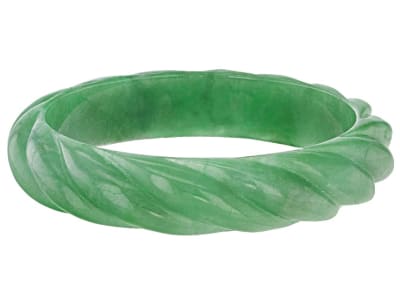The term jade is used for jadeite and nephrite jade. For centuries the two materials were considered one and the same. It was not until 1863 that they were identified as different minerals with a similar appearance and properties. Jadeite jade is a member of the pyroxene group and is primarily composed of the mineral jadeite. Nephrite is a tough rock comprised of intergrown crystals of minerals from the tremolite-actinolite solid solution series, part of the amphibole group.
General Information
Jade Colors
-
 Bi-color
Bi-color -
 Black
Black -
 Blue
Blue -
 Brown
Brown -
 Gray
Gray -
 Multi-color
Multi-color -
 Orange
Orange -
 Pink
Pink -
 Purple
Purple -
 Red
Red -
 White
White -
 Yellow
Yellow
Alternate Names
Lavender Jadeite, New Blue Jade, Nephrite
Countries of Origin
Canada; Myanmar; Russian Federation; Korea (the Republic of); Unknown; China; United States of America; Brazil; Mexico; Thailand; India
Enhancement
Bleached And Impregnated
Jade is often impregnated with wax to disguise fractures and improve its polish appearance. On other occasions, it may be dyed or heated to produce or improve color.
Tolerance:(+0.008/-0.008)
LWUV: Variable
